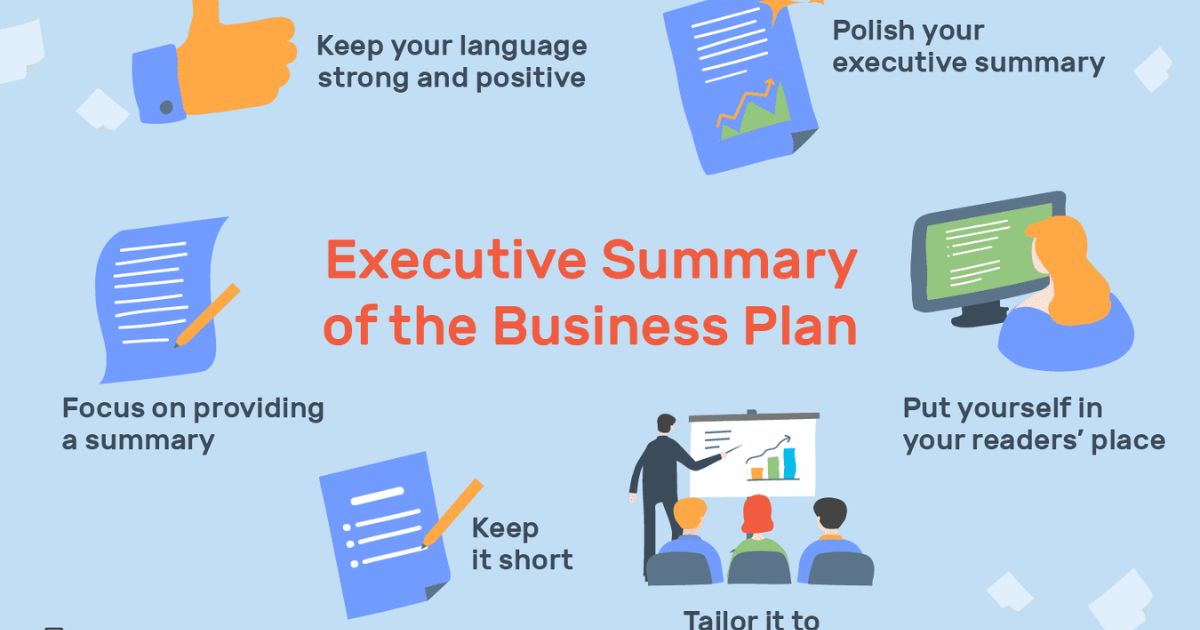The executive summary is a crucial component of a business plan, serving as a concise overview that captures the essence of the document. Through skillful use of juxtaposition, this article provides comprehensive guidance on writing an effective executive summary. Utilizing an academic style characterized by objectivity and impersonality, this article aims to engage readers seeking a sense of belonging in the realm of business planning. With an analytical and strategic approach, it explores key elements, offers practical tips, presents examples, and outlines important dos and don’ts for crafting an impressive executive summary within specified length guidelines.
Key Takeaways
• An executive summary is important for capturing investors’ attention and making informed investment decisions.
• It is crucial for a business to showcase its potential for success, unique selling points, and competitive advantages to set itself apart from competitors.
• Demonstrating the market opportunity by outlining the target market, market size, and growth potential is essential for attracting investors seeking promising ventures and industries.
• Key elements of an effective executive summary include providing a concise overview of the business, summarizing the business plan, highlighting key metrics and goals, outlining financial projections, and including a compelling value proposition.
Key Elements of an Executive Summary
The key elements of an executive summary include a concise overview of the business plan, the problem being addressed, the proposed solution, market analysis, financial projections, and key milestones. The purpose of an executive summary is to provide a strategic snapshot of a business plan to potential investors or stakeholders. A concise overview should highlight the unique selling proposition and competitive advantage of the business. The problem being addressed should clearly identify the pain points or challenges faced by customers in the target market.
The proposed solution should outline how the business intends to address these problems and meet customer needs. Market analysis should include an assessment of target market size, trends, competition, and potential growth opportunities. Financial projections should present realistic revenue forecasts and cost estimates for profitability assessment. Lastly, key milestones should demonstrate the company’s ability to execute its strategy effectively over time while achieving significant progress towards its goals. By including these elements in an executive summary, businesses can effectively communicate their value proposition and attract potential investors or stakeholders interested in joining their journey toward success.
Tips for Writing an Effective Executive Summary
One approach to crafting a concise and impactful overview of key business strategies is by incorporating essential elements that capture the attention of potential investors. An effective executive summary should provide a clear and compelling description of the business plan, highlighting its unique value proposition and competitive advantage. It should also include an analysis of the target market, outlining its size, growth potential, and key trends.
Furthermore, it is crucial to outline the company’s financial projections, demonstrating its profitability and return on investment. To engage potential investors, it is important to present a well-structured summary that flows logically from one section to another. By following these tips, businesses can create an executive summary that effectively communicates their business plan and entices investors to learn more about their venture.
Transition: Now that we have discussed some tips for writing an effective executive summary, let us examine an example of a well-written executive summary in the next section.
Example of a Well-Written Executive Summary
An example of a well-written executive summary showcases the incorporation of essential elements that effectively capture the attention of potential investors. The following three items illustrate the key components of such an executive summary:
1. Company Overview: Provide a brief introduction to the business, highlighting its mission, vision, and unique value proposition. This helps investors understand the purpose and potential of the company.
2. Market Analysis: Present a comprehensive analysis of the target market, including size, trends, and competitive landscape. This demonstrates an understanding of industry dynamics and opportunities for growth.
3. Financial Highlights: Summarize key financial information such as revenue projections, profitability, and funding requirements. This allows investors to assess the financial viability and potential returns on their investment.
Dos and Don’ts of Writing an Executive Summary

To effectively convey the essence of a company and attract potential investors, it is crucial to follow certain guidelines when crafting an executive summary. The dos and don’ts of writing an executive summary are essential to consider in order to maximize its impact. Firstly, it is important to keep the document concise and focused, highlighting key information without overwhelming the reader with unnecessary details.
Secondly, adopting an analytical approach allows for a strategic presentation of the company’s strengths, weaknesses, opportunities, and threats. This helps investors understand the competitive landscape and potential risks involved. Additionally, using language that fosters a sense of belonging can create a connection between the investor and the business idea being presented in the summary. By following these guidelines, one can increase their chances of creating an effective executive summary that captivates potential investors while accurately representing the company’s vision and objectives.
Length Guidelines for an Executive Summary
Conciseness and focus are crucial when considering the length of an executive summary, as it should highlight key information without overwhelming the reader with unnecessary details. To achieve this, it is recommended to adhere to certain length guidelines:
1. Keep it concise: An effective executive summary should be brief and to the point, typically ranging from one to three pages. This ensures that the reader can quickly grasp the main points without getting lost in lengthy explanations.
2. Highlight critical aspects: The executive summary should provide a concise overview of the business plan, emphasizing key elements such as market analysis, competitive advantages, financial projections, and strategic goals. This allows readers to gain a comprehensive understanding of the business venture.
3. Avoid excessive technical jargon: While some industry-specific terms may be necessary for clarity, it is essential to strike a balance between providing relevant information and using language that is accessible to a wide audience. By doing so, inclusivity is fostered among readers who desire belonging within the business community.
Executive Summary Template and Structure
The structure of an executive summary template includes sections that outline key elements of the business venture such as market analysis, competitive advantages, financial projections, and strategic goals. The market analysis section provides a comprehensive overview of the target market, including its size, growth potential, and trends. This helps investors understand the market dynamics and assess the viability of the business idea.
The competitive advantages section highlights what sets the business apart from competitors and how it plans to maintain a sustainable competitive edge. Financial projections provide an estimate of revenue, expenses, and profitability over a specific period. These projections demonstrate the financial feasibility of the venture and help investors assess its potential return on investment. Finally, strategic goals outline the long-term objectives and milestones that the business aims to achieve. Overall, this structured format allows for a concise yet comprehensive presentation of key information in an executive summary for a business plan.
Importance of an Impressive Executive Summary
Impressing investors with an executive summary is crucial as it serves as the initial introduction to the business venture and can significantly influence their decision to invest. To create an impressive executive summary, consider the following:
1. Clear and concise communication: Presenting information in a straightforward manner helps investors grasp key points quickly and easily.
2. Highlighting unique value proposition: Emphasize what sets your business apart from competitors, showcasing its potential for success.
3. Demonstrating market opportunity: Clearly outline the target market and its size, demonstrating growth potential and attracting investors seeking belonging within a promising industry.
An impressive executive summary not only captures investors’ attention but also provides a strategic overview of the business venture, enabling them to make informed investment decisions. By adhering to these guidelines, entrepreneurs can enhance their chances of securing investor interest and support.
Conclusion
The executive summary is a crucial element of any business plan as it provides a concise overview of the entire document. Key elements to include are the company’s mission and vision, market analysis, competitive advantage, and financial projections. Writing an effective executive summary requires clear language, highlighting the most important information. It should be no more than 10% of the total length of the business plan. An interesting statistic to note is that according to Harvard Business Review, executives spend an average of two minutes reading an executive summary before making a decision on whether to continue reading or not.








